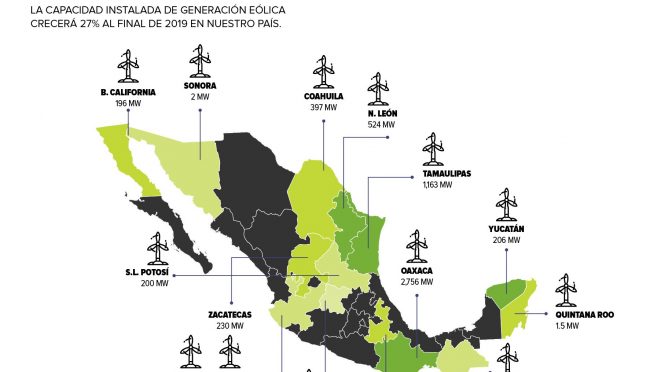The rise of solar and wind power in Mexico’s energy market has been nothing short of meteoric. Over the past few years, the country has emerged as a global leader in renewable energy, driven by a combination of favorable natural resources, progressive government policies, and growing private sector investment. As the world continues to grapple with the challenges of climate change and the need for sustainable energy solutions, Mexico’s success in harnessing the power of the sun and wind offers valuable lessons for other nations seeking to transition to a low-carbon future.
One of the key factors behind Mexico’s renewable energy boom has been the country’s abundant solar and wind resources. With an average of 6.5 hours of sunlight per day and wind speeds that can reach up to 10 meters per second in some regions, Mexico is ideally suited for the large-scale deployment of solar and wind power. In fact, according to the International Renewable Energy Agency (IRENA), Mexico has the potential to generate up to 40% of its electricity from renewable sources by 2030, with solar and wind power playing a central role in this transition.
Another important driver of Mexico’s renewable energy growth has been the government’s commitment to creating a supportive policy environment. In 2012, Mexico enacted a landmark climate change law that set ambitious targets for reducing greenhouse gas emissions and increasing the share of renewable energy in the country’s electricity mix. This was followed by a series of energy reforms in 2013 and 2014, which opened up the electricity market to private investment and introduced competitive auctions for renewable energy projects.
These policy changes have helped to spur a wave of investment in Mexico’s solar and wind power sectors. Since 2014, the country has held four long-term power auctions, which have resulted in the awarding of contracts for more than 7,000 megawatts (MW) of solar and wind capacity. Many of these projects have been developed by international companies, attracted by Mexico’s strong renewable energy potential and favorable market conditions.
As a result of this investment, Mexico’s solar and wind power capacity has grown rapidly in recent years. In 2018, the country’s installed solar capacity surpassed 3,000 MW, making it the largest solar market in Latin America. Meanwhile, Mexico’s wind power capacity has more than doubled since 2014, reaching over 6,200 MW in 2019. This growth has been accompanied by a significant reduction in the cost of solar and wind power, with prices in Mexico now among the lowest in the world.
The expansion of solar and wind power in Mexico has not only helped to diversify the country’s energy mix and reduce its reliance on fossil fuels, but it has also created significant economic and social benefits. According to a recent study by the Mexican Association of Wind Energy (AMDEE), the wind power sector alone has generated more than 64,000 direct and indirect jobs in Mexico since 2010. Moreover, renewable energy projects have brought much-needed investment to rural and marginalized communities, helping to stimulate local economies and improve living standards.
Despite these impressive achievements, Mexico’s renewable energy transition is far from complete. The country still faces a number of challenges, including the need to modernize its electricity grid, improve energy storage capacity, and address concerns about the social and environmental impacts of renewable energy projects. However, as Mexico continues to invest in solar and wind power and build on its early successes, it is well-positioned to become a global leader in the clean energy revolution.
In conclusion, the growth of solar and wind power in Mexico’s energy market has been driven by a combination of abundant natural resources, supportive government policies, and private sector investment. As the country continues to build on this momentum and address the remaining challenges, it offers a valuable example for other nations seeking to transition to a more sustainable energy future.


